After the exhilarating highs of the first season and the somewhat inconsistent but still engaging second season, Doctor Who‘s third season presents a fascinating paradox. It’s a season of stark contrasts, showcasing some of the most celebrated episodes of NuWho alongside a few that are less fondly remembered. A prevailing sense of somber grit permeates this season, which, at times, can feel intentionally unsettling.
However, revisiting this season reveals that this unsettling atmosphere is deeply intertwined with the Doctor’s own turbulent emotional state. Still grappling with the loss of Rose, the Tenth Doctor embodies a ‘heartbreaker’ persona, leading Martha on an emotional rollercoaster while disavowing any responsibility for her feelings. Martha herself becomes a relatable figure for intelligent, capable individuals who find themselves overlooking warning signs and falling into patterns of unrequited love, even as they become aware of the emotional toll.
While it would be enriching to see Martha developed with the same depth and complexity as some of Doctor Who‘s most iconic companions, and acknowledge that Freema Agyeman’s performance is somewhat constrained by the writing, her character arc, though limited, resonates within a season deeply exploring themes of loneliness, emotional ambiguity, and the imperfect ways we cope with the voids in our lives. Here’s a ranking of the season’s standout moments and its more disappointing episodes:
LOWER TIER
12. “Daleks in Manhattan” / “Evolution of the Daleks” (season three, episodes four and five)
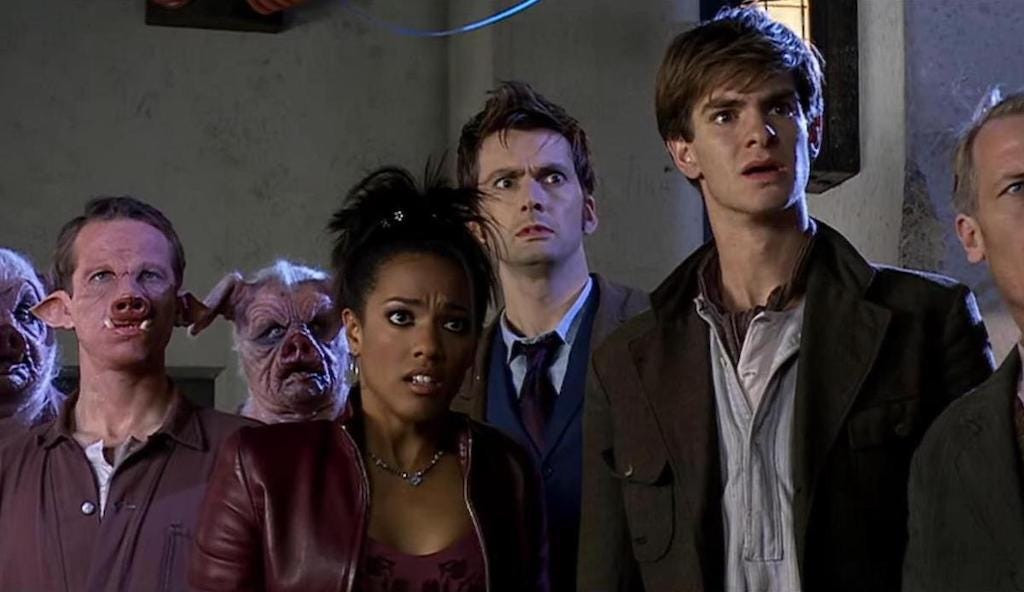 Daleks in Manhattan still from Doctor Who series 3 episode 4
Daleks in Manhattan still from Doctor Who series 3 episode 4
When you attempt to fuse the theatricality of a B-movie with the gravity of a Great Depression narrative and a Dalek ethical dilemma, the result is a chaotic blend – and that’s not even mentioning the questionable New York accents. Doctor Who stories set in America often tread on thin ice, and this peculiar two-parter exemplifies the pitfalls of transplanting Who to US soil, particularly when revisiting classic villains. Any potential intrigue in the 1930s backdrop dissipates the moment the absurd human-Dalek hybrid appears. Even a young Andrew Garfield’s presence can’t salvage this misstep.
11. “The Lazarus Experiment” (season three, episode six)
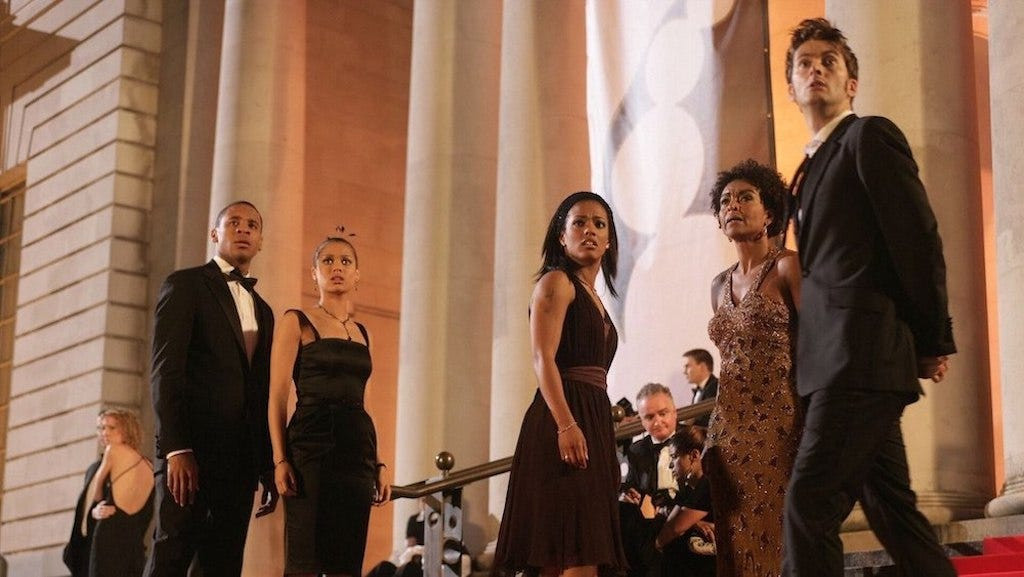 Professor Lazarus transforming in The Lazarus Experiment Doctor Who series 3 episode 6
Professor Lazarus transforming in The Lazarus Experiment Doctor Who series 3 episode 6
“Easily forgettable” might be a generous description for an episode that requires viewers to endure Mark Gatiss in roles as a creepy older man, a creepy younger man, and a creepy lizard creature. This underdeveloped episode is too tedious to be offensively bad. Regrettably, it’s also the point where it becomes evident that Martha and her family won’t receive the same depth and detailed characterization that Rose and her family enjoyed. This makes it a prime candidate for skipping during any season three rewatch.
10. “The Shakespeare Code” (season three, episode two)
“The Shakespeare Code” possesses all the elements for a resounding success. William Shakespeare naturally lends himself to a historical celebrity encounter, and the Elizabethan era offers a rich setting for the show to explore. However, this episode leans into the more farcical aspects of Who in a way that ultimately undermines its narrative. Shakespeare himself is surprisingly uninteresting as a character, and while the emerging tension between Martha and the Doctor injects some intrigue, the episode as a whole lacks the cleverness expected of a story centered around one of history’s most brilliant minds.
9. “The Sound of Drums” / “Last of the Time Lords” (season three, episodes twelve and thirteen)
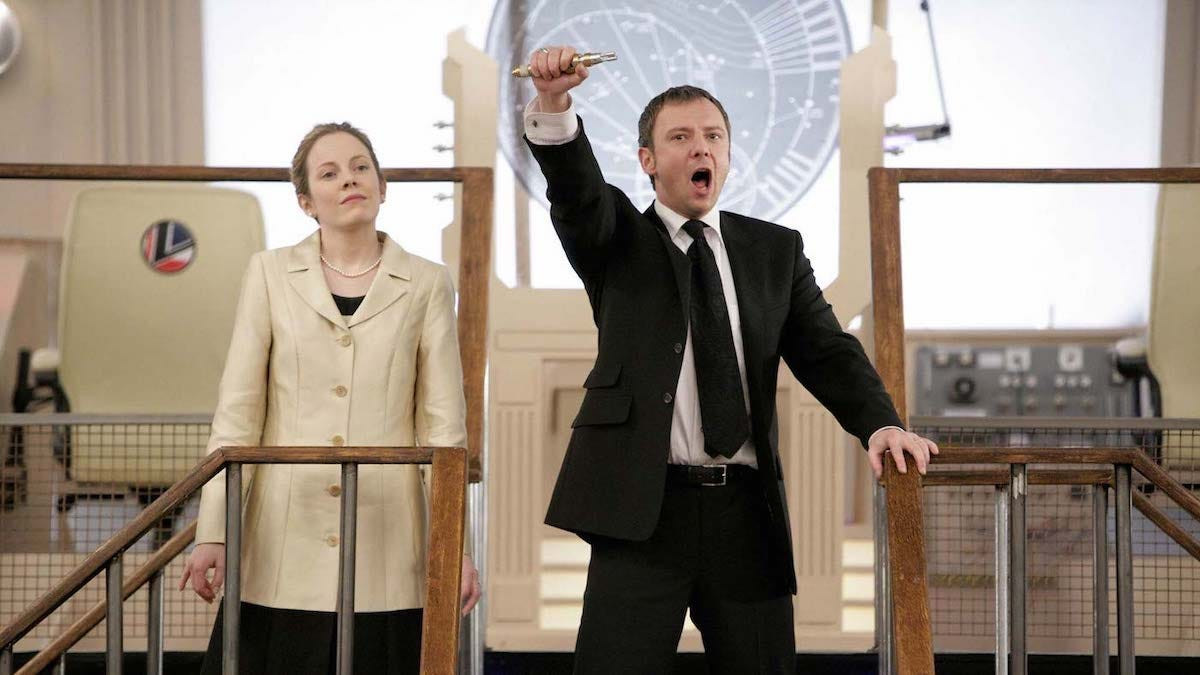 The Master and The Doctor facing off in Last of the Time Lords Doctor Who series 3 finale
The Master and The Doctor facing off in Last of the Time Lords Doctor Who series 3 finale
As the weakest of Russell T Davies’s finales, this two-part episode’s primary redeeming feature is the electrifying chemistry between David Tennant’s Doctor and John Simm’s Master. Unfortunately, accessing this dynamic requires navigating a considerable amount of absurdity. The most glaring issue is the bizarre CGI ‘Dobby Doctor’ monstrosity, but there’s also the uneven pacing, the disturbingly grim twist involving the Toclafane, and a final resolution that feels overly simplistic. While it’s refreshing to see a companion depart without enduring trauma for once, it’s unfortunate that it occurs in a finale that somewhat diminishes an otherwise strong series of episodes in the latter half of season three.
SOLID TIER
8. “The Runaway Bride” (2006 Christmas special)
 Donna Noble and The Doctor in The Runaway Bride Christmas Special
Donna Noble and The Doctor in The Runaway Bride Christmas Special
A zany farce immediately followed by a somber meditation on genocide: Could there be a more quintessential RTD-era Doctor Who episode than “The Runaway Bride”? Like many Doctor Who Christmas specials, the tone is amplified to an extreme (sometimes successfully, sometimes less so), and the narrative itself is somewhat thin for a 60-minute episode. However, witnessing the initial spark of chemistry between David Tennant and Catherine Tate is delightful, and the episode thoughtfully positions Donna as a pivotal figure in the Doctor’s emotional recovery post-Rose. Overall, it serves as an effective tonal shift after the harrowing conclusion of season two.
7. “42” (season three, episode seven)
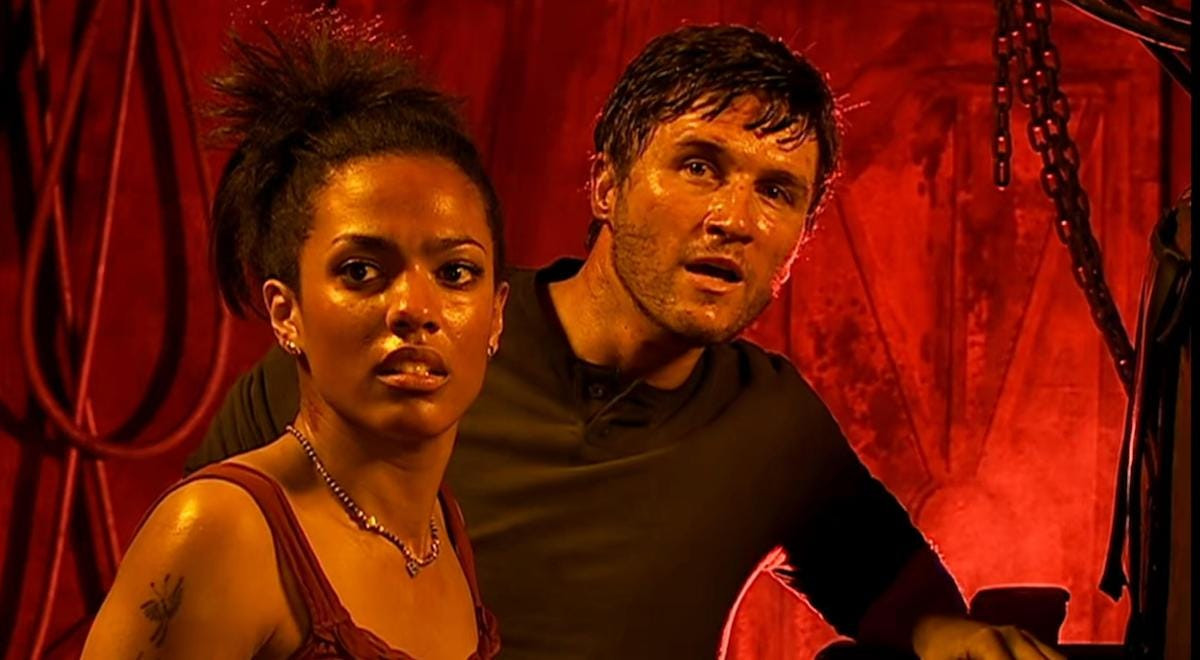 Martha Jones in danger in episode 42 Doctor Who series 3 episode 7
Martha Jones in danger in episode 42 Doctor Who series 3 episode 7
Season three’s ‘base-under-siege’ story might not reach the heights of “The Impossible Planet” / “The Satan Pit,” but it remains a thoroughly enjoyable hour in its own right. The real-time structure maintains a sense of urgency, and there are several effectively unsettling visuals, such as Martha adrift in space in an escape pod. Coupled with a compelling central mystery about a solar entity, it makes for a solid standalone adventure. (It’s also somewhat ironic that it aired just a month after the release of Danny Boyle’s Sunshine.)
6. “Voyage of the Damned” (2007 Christmas special)
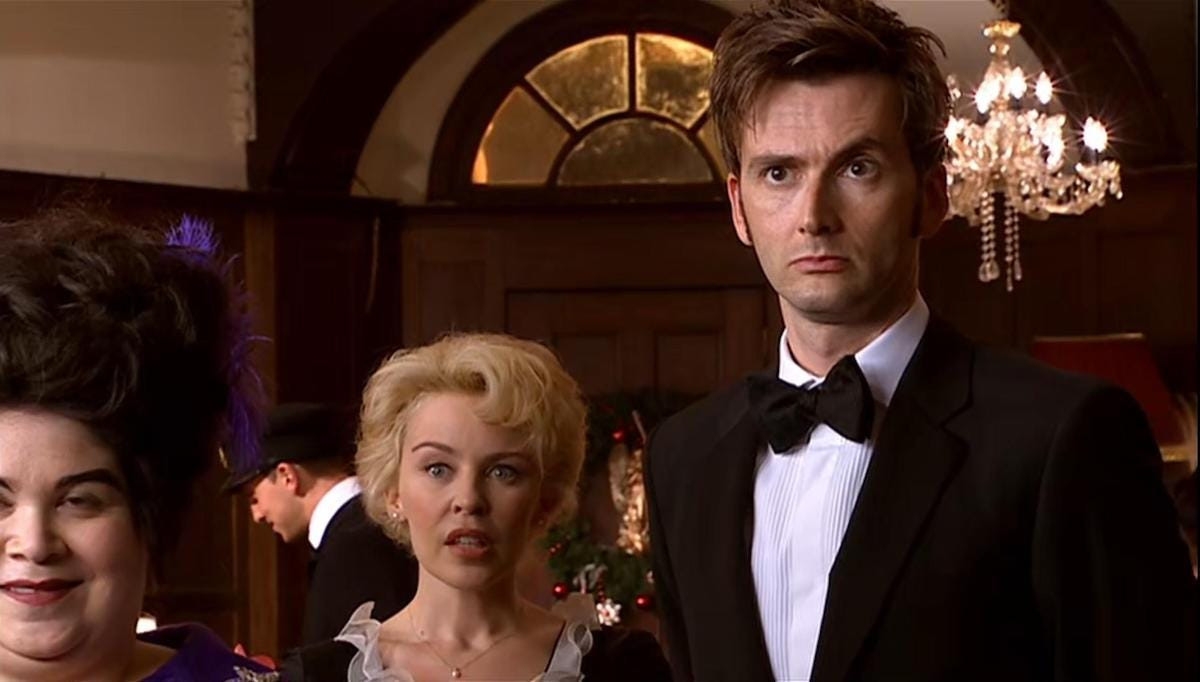 The Doctor and Astrid in Voyage of the Damned Christmas Special
The Doctor and Astrid in Voyage of the Damned Christmas Special
What better way to celebrate the holiday season than with The Poseidon Adventure in space? It’s quite remarkable that the most purely ‘fun’ Christmas special of the RTD era is a disaster movie pastiche where almost all of the likeable supporting characters perish. However, Kylie Minogue’s vibrant guest performance sets the tone for an engaging and lighthearted adventure with a hint of capitalist critique. Ultimately, the episode’s greatest strength is allowing Tennant to fully embrace his charisma, delivering perhaps his smoothest performance of his entire tenure. And that’s a welcome Christmas gift indeed.
5. “Gridlock” (season three, episode three)
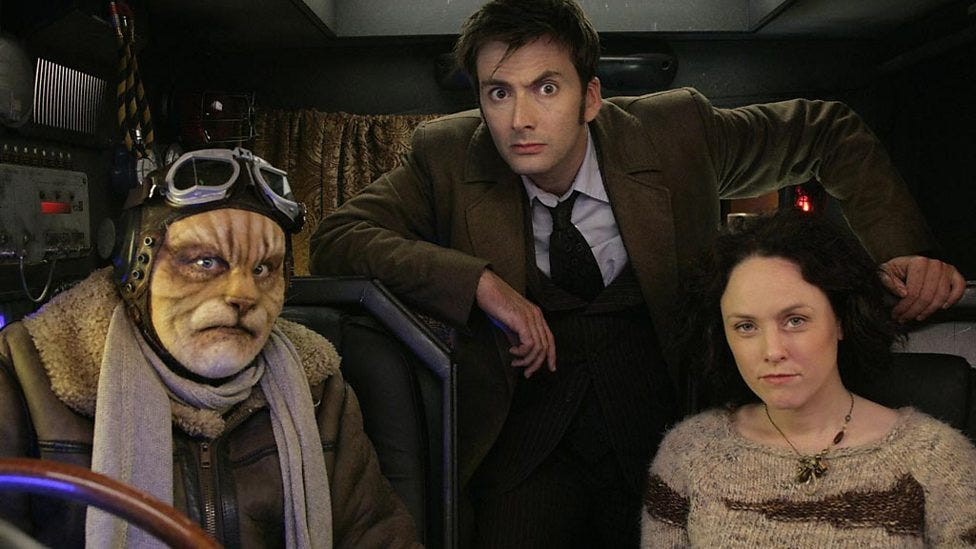 The Macra in Gridlock Doctor Who series 3 episode 3
The Macra in Gridlock Doctor Who series 3 episode 3
Following “The End of the World” and “New Earth,” “Gridlock” concludes the Face of Boe/Year 5 Billion trilogy with considerable flair and originality. It exemplifies the kind of dependable episodic adventure that should ideally populate a season: slightly whimsical, somewhat thought-provoking, and subtly socially conscious. Much like the episode’s endless motorway, there are layers to appreciate – from the Doctor’s attempts to recapture past moments with Rose to the unexpected sense of community that provides the episode’s emotional core. Overall, “Gridlock” is an underrated gem of season three and deserves revisiting if you’ve overlooked it previously.
4. “Utopia” (season three, episode eleven)
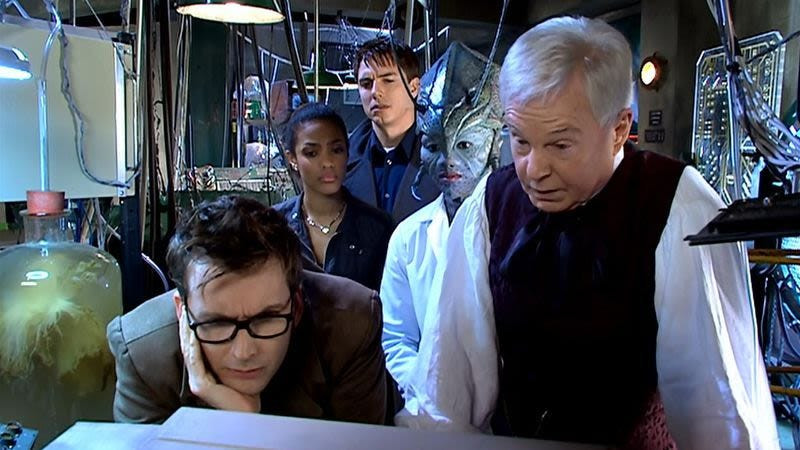 Captain Jack, Martha and The Doctor in Utopia Doctor Who series 3 episode 11
Captain Jack, Martha and The Doctor in Utopia Doctor Who series 3 episode 11
RTD generally prefers a sense of unease in his penultimate episodes, and this is particularly true of “Utopia,” set in a desolate refugee camp at the universe’s end. Even Captain Jack’s highly anticipated return is marked more by tension and anxiety than joy and nostalgia (a dynamic Tennant portrays flawlessly). Elevated by a superb performance from Derek Jacobi, “Utopia” marks RTD’s peak as showrunner, masterfully weaving together season-long and series-spanning Who elements into a game-changing revelation. If there’s a flaw, it’s that “Utopia” is only half a story, and the actual two-part finale doesn’t quite live up to its promise. However, we are left with this compellingly bleak penultimate episode for a season defined by its intriguing darkness.
TOP TIER
3. “Smith and Jones” (season three, episode one)
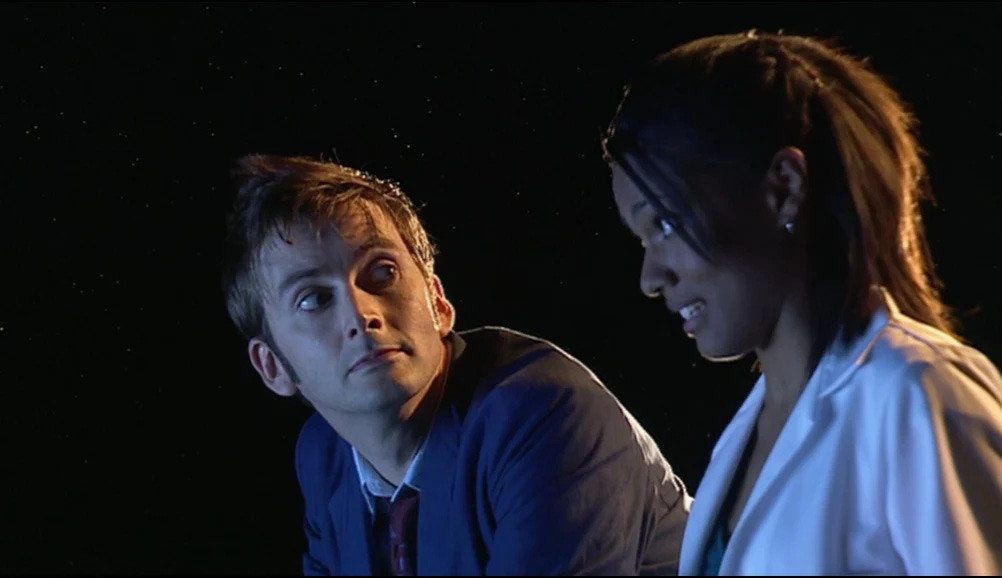 The Doctor and Martha facing the Judoon in Smith and Jones Doctor Who series 3 premiere
The Doctor and Martha facing the Judoon in Smith and Jones Doctor Who series 3 premiere
My perhaps controversial opinion is that “Smith and Jones” is one of the most underappreciated episodes in the Doctor Who canon – a delightful and original sci-fi adventure that launches the season with style while convincingly demonstrating why the Doctor chooses Martha as his new companion. In fact, this might be Martha’s strongest episode, as she maintains composure under the most extraordinary circumstances. The lunar setting is atmospheric, the Judoon are entertaining antagonists, the concept of the Doctor traveling with an actual doctor is clever, and Tennant and Agyeman exhibit a vibrant chemistry they never quite replicate as effectively later on. It’s RTD’s best season premiere and an excellent start to this uneven season.
2. “Blink” (season three, episode ten)
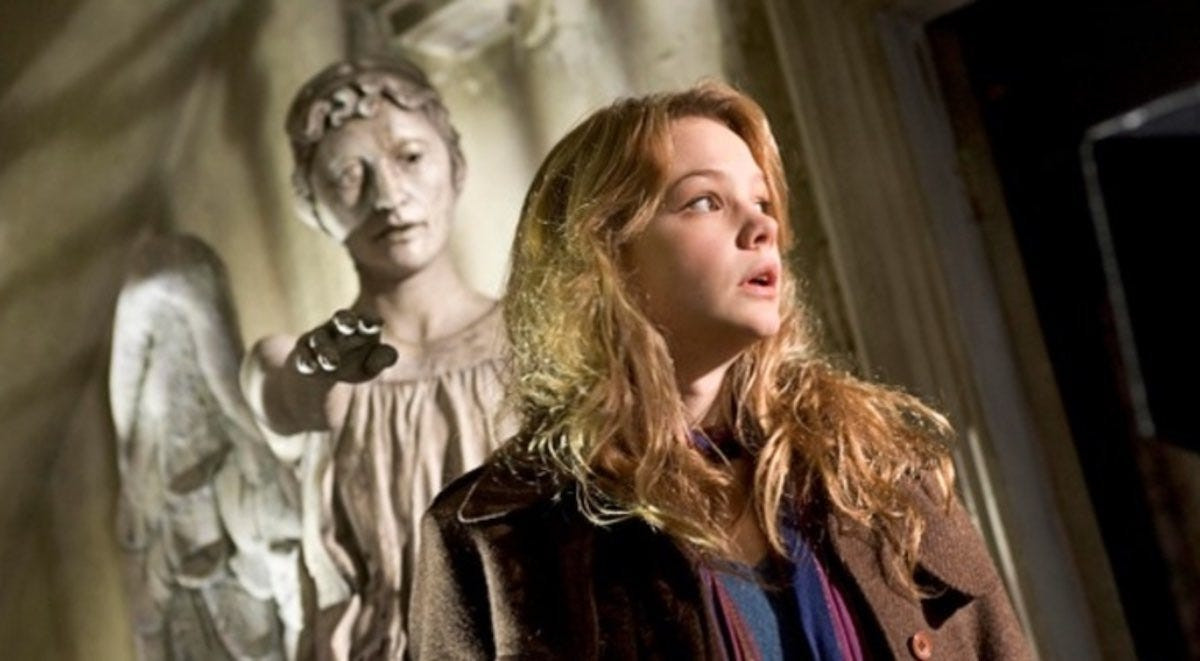 Sally Sparrow facing the Weeping Angels in Blink Doctor Who series 3 episode 10
Sally Sparrow facing the Weeping Angels in Blink Doctor Who series 3 episode 10
What more can be said about “Blink” that hasn’t already been expressed? It’s a phenomenal hour of science fiction television, introducing the most iconic new monsters of modern Who, anchored by a future two-time Oscar nominee. Add a Doctor/companion-lite structure that makes it accessible to new viewers, and it’s no surprise it’s consistently lauded as one of the greatest Doctor Who episodes of all time. It’s frightening, funny, meta, and surprisingly poignant. And it remains as enjoyable to watch today as it was over 15 years ago.
1. “Human Nature” / “The Family of Blood” (season three, episodes eight and nine)
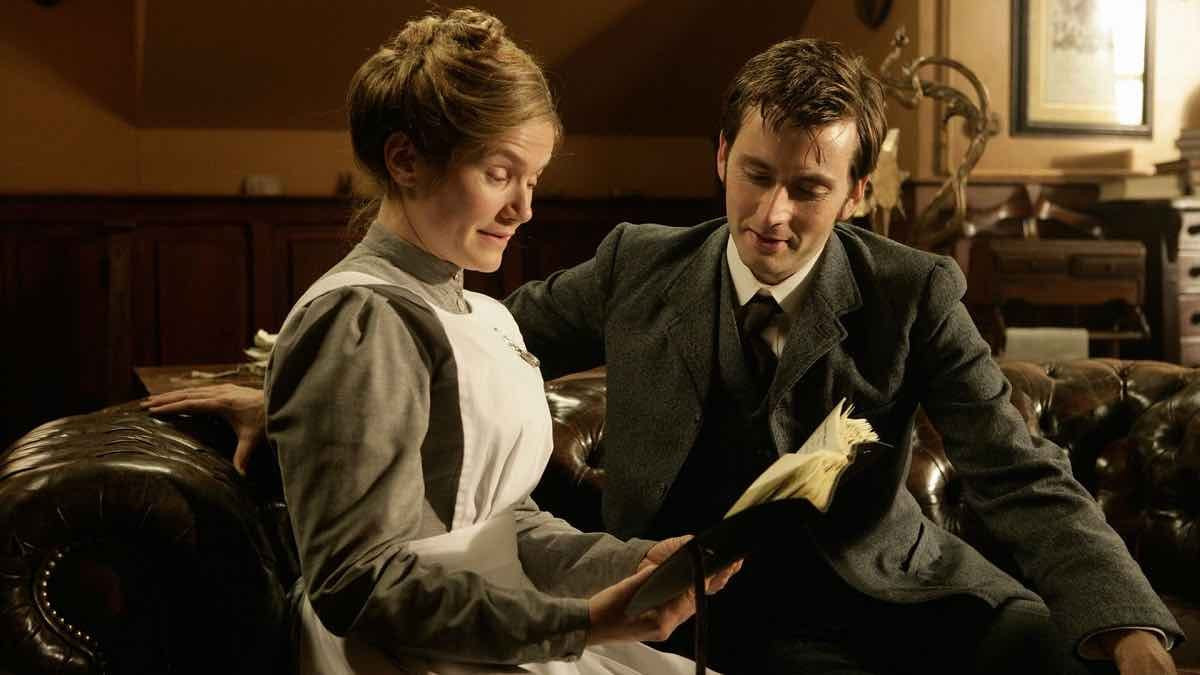 John Smith and Joan Redfern in Human Nature Doctor Who series 3 episode 8 and 9
John Smith and Joan Redfern in Human Nature Doctor Who series 3 episode 8 and 9
While “Blink” is undeniably brilliant, for me, “Human Nature” / “The Family of Blood” is the true masterpiece of season three – perhaps even the masterpiece of the entire RTD era. This is one of the most purely dramatic stories NuWho has ever presented, made even more impactful by its serious commitment to both the horror of its alien invasion narrative and the emotional depth of its human story. (An entire separate analysis could be dedicated to how effectively this episode utilizes its pre-World War I setting to establish the tone for a story about sacrifice, love, cruelty, and the futility of war.) The true highlight is Tennant’s astonishingly transformative performance, complemented by an all-time great supporting performance from Jessica Hynes. Despite the Doctor’s profound love for humanity, he can never truly grasp what it means to be human. And this two-parter makes that point profoundly clear.
Coming soon on Girl Culture: A review of The Marvels; plus the conclusion of this rewatch project with Doctor Who season four, ranked.
All the writing on Girl Culture is free to everyone, but you can support the newsletter for $5 a month or $50 a year
